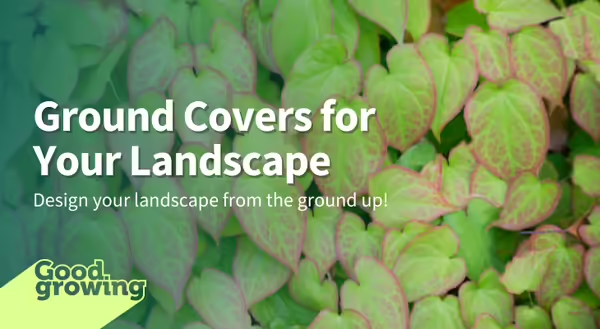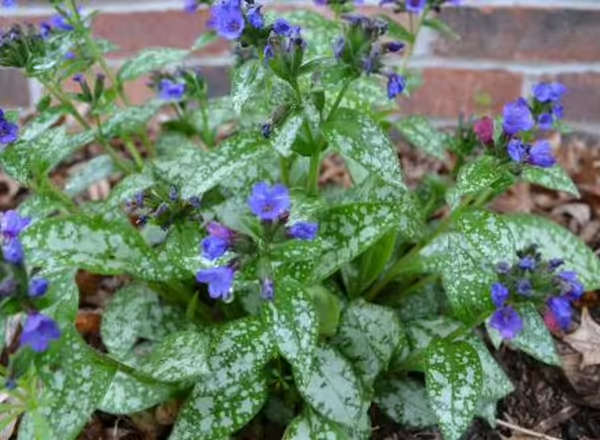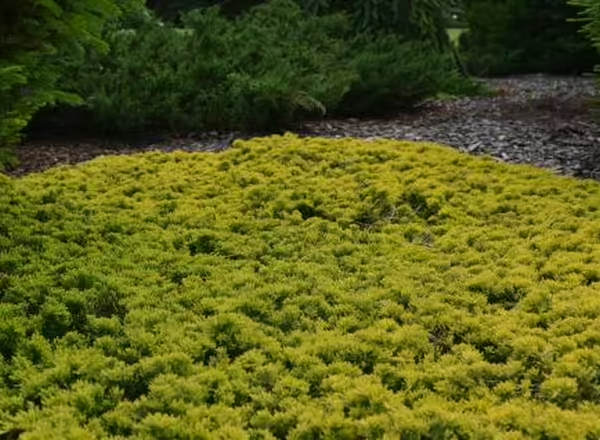
Our landscapes are more than flowers and trees. Within a natural landscape, you will find multiple layers starting at the ground level and moving all the way up into the canopy of the trees. Wildlife utilizes these layers depending on their needs, like nesting and breeding or gathering food. Plants will intermingle, creating communities based on the conditions present such as shade, heavy clay soil, or a steep slope. Many of our home landscapes have unique site conditions. Ideally, we select plants that fit within the context of our property and design layer upon layer. Ground covers can help our native insects by creating soft landings that are more than just mulch.
One layer that often gets neglected is the ground cover layer. Ground cover, as its name implies, is a layer of plants that spreads along the ground creating the canvas for the taller plants. In my yard, much of the ‘canvas’ is comprised of violets, wild strawberries, and creeping Charlie. Perhaps not something the typical homeowner would enjoy. However, there are some stellar ground cover choices for Illinois homes. Following are a few options.
Ground Covers for Illinois Landscapes
Lily-turf (Liriope spp.)
A recent visit to historical Nauvoo revealed a ground cover I have known for decades, but have often cast aside. Liriope is a grasslike ground cover that horticulturists in Nauvoo have planted around their trees. Instead of rings of mulch, these are rings of liriope! These liriope rings get mowed down once a year in early spring. When it comes to selection, there are often two species that can be found in garden centers. Creeping lilyturf (Liriope spicata), can be an aggressive spreader and grow out of bounds if not contained. Another option is blue lilyturf (Liriope muscari) which is a bit larger but spreads slowly. Both species produce flower spikes in mid-to-late summer and can be grown in sun or shade.



Lungwort (Pulmonaria sacharata)
One of the first perennials I learned about in school, the scientific name ‘sacharata’ describes the plant as sweetened. Not because of its flavor, but the green leaves are speckled with spots of white that give the plant an appearance of being dusted in sugar. Or at least that’s the trick I used to memorize the plant’s scientific name. Last year, out of nostalgia I purchased lungwort, really only thinking about leaf coloration. However, this spring I am delighted by its flower display of blue and purple. These plants do well in shade and have tolerated the drier soil conditions under the overhang of my porch so long as I remember to water them every so often.
Creeping juniper (Juniperus spp.)
If you’re wanting a low-growing evergreen ground cover, creeping juniper might be your plant. There are many different species of creeping juniper. Likely one of the most popular cultivars is known as ‘Blue Rug’. However, there are many different cultivars out there some with tints of blue, others bright green, and others still that are golden in color. Creeping junipers are often used in full sun, in harsh soil conditions, and places with low water use. I often call this the “trash can” plant because it tends to accumulate lots of trash that blow underneath the foliage. Every so often, lift the foliage and rake out debris growing underneath.
Barrenwort (Epimedium grandiflorum)
One perennial that has performed very well in our McDonough County demonstration garden, barrenwort, has thrived in the understory dry shade of our sycamore tree. Clumps of Barrenwort spread slowly, but will, over time, create attractive colonies of heart-shaped leaves in a woodland setting.
Mayapple (Podophyllum peltatum)
Maybe not an easy find in the garden center, but a gardener can hope, right? Mayapple is a signal of spring with its umbrella-like leaves unfolding up out of the leaf layer in the forest. This is a native wildflower that will not stick around all year. But it makes quite a statement in the spring landscape. Works well as a ground cover in a naturalized setting.
American alumroot (Heuchera americana)
This and many other related heuchera species can do well in Illinois gardens. Alumroot is grown in full sun to full shade and adaptable to many different soil conditions. Some alumroot like Heuchera parviflora can be found growing on cliffs. There are many different species and cultivars of Heuchera so make sure to read those plant tags carefully! While I don’t often see these growing together into a carpet of ground cover, I do divide these in my yard to fill in an area.
Sedges (Carex spp.)
Are you seeing the newest trend in garden plants? Sedges have started making a name for themselves in recent years with their use in various applications from rain gardens to pollinator gardens. Sedges are grasslike plants that have triangular stems.
Many sedges are native to Illinois and can be found in dry soils to wetlands. The list of sedges seems to grow each year but more popular species are Pennsylvania sedge (C. pennsylvanica), Palm sedge (C. muskingumensis), Gray sedge (C. grayii), and Common wood sedge (C. blanda). Sedges will grow together with time and create tough yet delicate textured groundcover. Sedges can be a good substitute for liriope for those wishing to plant natives.
Creeping Thyme (Thymus spp.)
I see so many online sources suggest planting thyme as a ground cover. One important thing to know is that thyme requires VERY well-drained soil. I have planted thyme as a ground cover as an intern at Missouri Botanical Garden’s Japanese garden. To provide proper soil drainage the horticulturist had me amend the soil with gravel. When I thought I had enough, he shook his head and said, “More!” I planted plugs of thyme in a mix similar to that for succulents.



Not listed
Noticed any missing ground covers? Some, like periwinkle (Vinca minor) or wintercreeper (Euonymus fortunei), English ivy (Hedera helix), can invade woodlands and become problems in many different situations. Still, others like ostrich fern or prairie dropseed can be great to include in this list too.
Good Growing Tip of the Week: How many ground cover plants do you buy? The spread of plants can vary even within the same species. So be sure to know the square foot you wish to cover and read the plant tag to determine how much ground these plants will cover.
Check out these and more ground cover options in this past Extension webinar, Living Carpets: Ground Covers
Signup for our emails!
Want to get notified when new Good Growing posts are available? SIGN ME UP
MEET THE AUTHOR
Chris Enroth is a horticulture educator with University of Illinois Extension, serving Henderson, McDonough, Knox, and Warren counties since 2012. Chris provides horticulture programming with an emphasis on the home gardener, landscape maintenance personnel, and commercial landscapers. Additional responsibilities include coordinating local county Master Gardener and Master Naturalist volunteers - providing their training, continuing education, advanced training, seasonal events, and organizing community outreach programs for horticulture and conservation assistance/education. In his spare time, Chris enjoys the outdoors, lounging in the garden among the flowers (weeds to most).